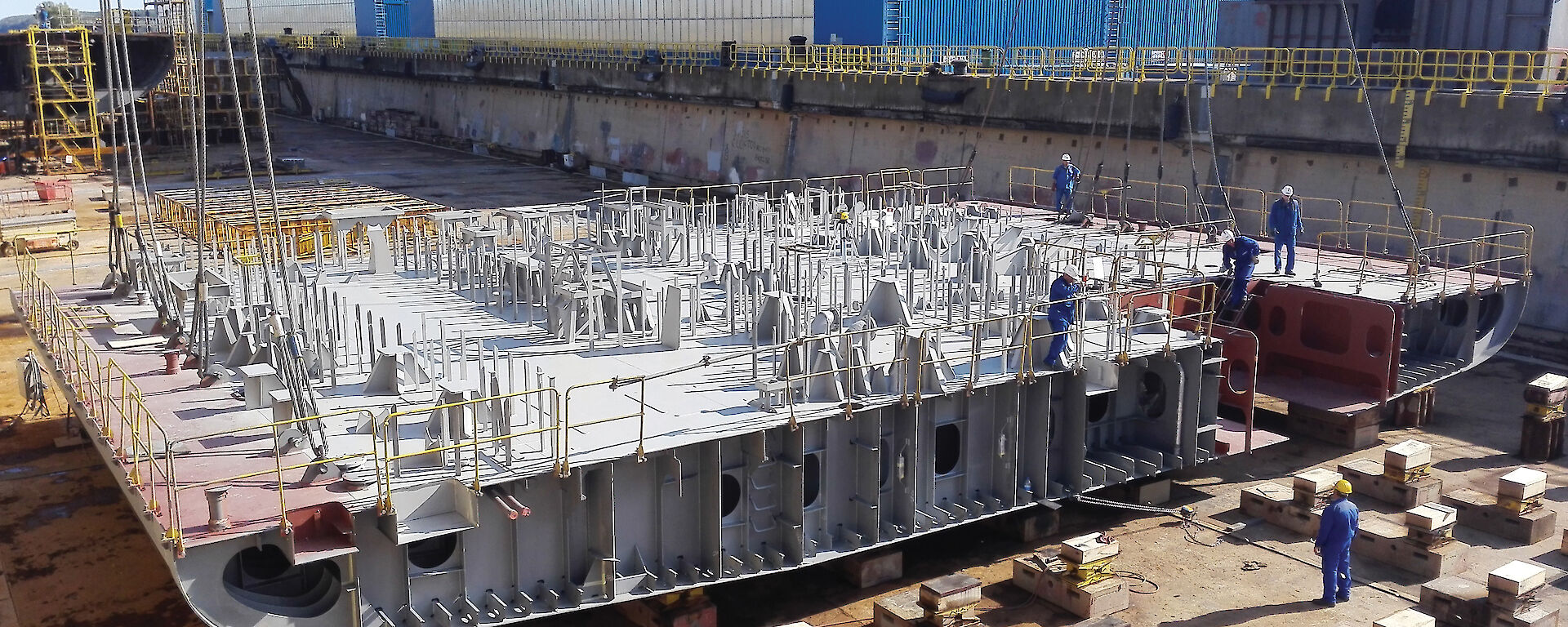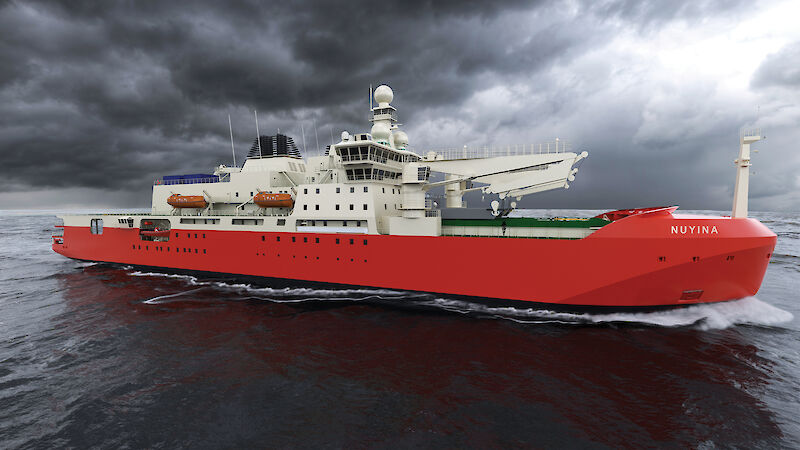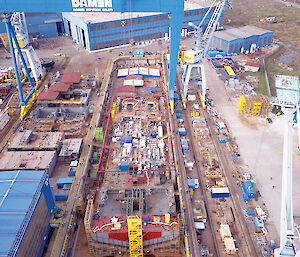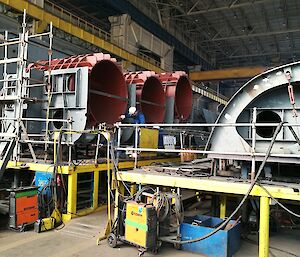For Australian Antarctic Division Icebreaker Project Manager, Nick Browne, the scientific requirements of the icebreaker were the primary driver of the ship’s design, followed closely by its icebreaking and resupply capabilities.
“The ship needs to be quiet so scientists can use their acoustic instruments, which rely on radiated and reflected sound to map the sea floor or measure the biomass of marine organisms in the water column,” Mr Browne said.
“But we also need our ship to break 1.65 metres of ice at a continuous speed of three knots. So this immediately sets up a conflict in designing a propulsion system and hull form.
“In icebreaking mode we want to break ice with high thrust on the two propellers, and this generates a lot of noise. In science mode we want the propellers to operate at lower speeds so they produce less noise, with no or few bubbles, which make noise when they pop.”
To achieve this dichotomy in operation the ship is being built to a design specification known as ‘Silent R’, for speeds up to eight knots. This sets thresholds for the decibel levels permitted for the different range of sound frequencies the ship emits.
To help achieve this rating the ship has a hybrid propulsion system. Two big diesel engines directly drive the ‘controllable pitch’ propellers when icebreaking, while quiet electric motors, powered by diesel generators on flexible mounting systems (to absorb vibrations), power the ship for silent research operations.
As well as these modifications, the hull and propeller shapes were optimised using a mathematical modelling technique known as computational fluid dynamics (CFD). Their shapes ensure any bubbles, formed as the ship moves through the water, don’t interfere with the acoustic equipment.
While being quiet is one thing, the ship still needs to be able to break thick ice at a set speed and operate in open water in a variety of sea and wind conditions.
To test it can do all three, the designers built a six metre scale-model of the vessel to conduct physical tests in facilities that included calm water tanks, wave tanks and an ice basin. The tests focussed on powering, manoeuvring, ‘sea keeping’ (motion response to waves), icebreaking, and bubble formation and movement.
“Computational fluid dynamics is mature enough that you can see whether one design option is better than another. So the grunt work is done with CFD and the physical model testing provides validation and confirmation that the chosen design works,” Mr Browne said.
When the ship is in icebreaking mode the bow hull shape allows it to ride up on to the ice, while a ‘skeg’ (a forward extension of the keel) prevents it from riding up too far. The weight of the ship and the shape of the hull together provide a downward force that breaks the ice by flexion, rather than compression.
“It’s like breaking a chocolate bar. It’s difficult to break by pushing the ends together and compressing it, but if you bend it, it breaks,” Mr Browne said.
“The hull of Nuyina is shaped so that we have continuous, steady icebreaking as the ship moves forward, rather than relying on backing and ramming.”
In terms of sea keeping, the ship is designed so that helicopter operations can be conducted in up to sea state 3 (1.25m wave height), while small cranes to deploy watercraft can operate in moderate seas, up to sea state 4 (2.5m wave height). The ship can also transit at 12 knots, or conduct stationary scientific equipment deployments, in rough seas, or sea state 5 (4m wave height).
“Sea keeping is a critical part of both scientific and resupply operations,” Mr Browne said.
“We have set certain sea and wind conditions in which the vessel must be capable of operating, and our numerical and scale-model sea keeping tests indicate that the vessel will be suitable.”
The final tests will come when the ship enters the harbour for ‘harbour acceptance trials’ in 2019, followed by ‘sea acceptance trials’. Both these trials are standard ship building activities that look at propulsion, bilge, ballast and other auxiliary systems. It will then go into ‘special sea trials’ designed to ensure the ship can operate in its unique environment.
These special sea trials will include deep water testing for scientific research deployments, measurement of acoustic noise — to see whether the ship achieves its Silent R rating — and whether it is suitable for operating in ice and low temperatures.
“We can’t completely replicate the Antarctic operating environment during the testing program, but we’ll get to the point where we’ll be confident that our requirements are met,” Mr Browne said.
What is certain is that the ship will open up new opportunities for Australian scientists and international collaborators and that it will have the flexibility to support current and future research priorities.
“I can’t think of any Antarctic vessel that will be able to deliver the combination of icebreaking, science and logistics capabilities, at these levels, better than Nuyina,” Mr Browne said.
Wendy Pyper
Australian Antarctic Division





